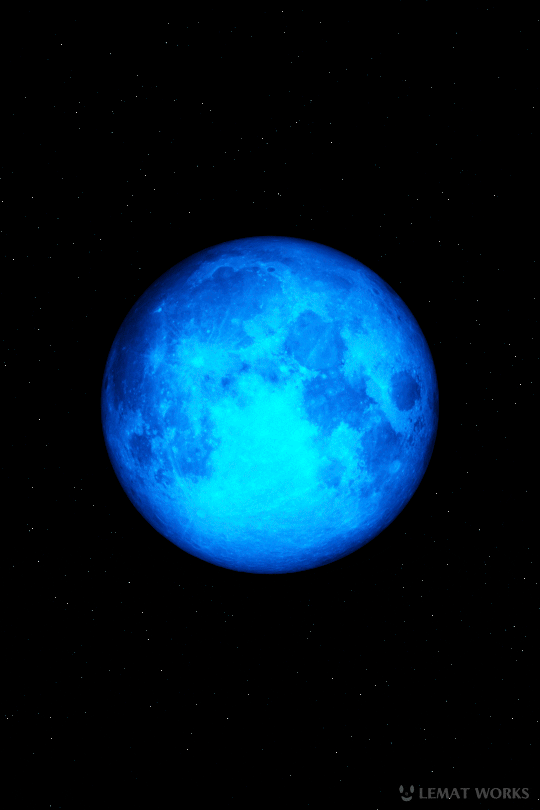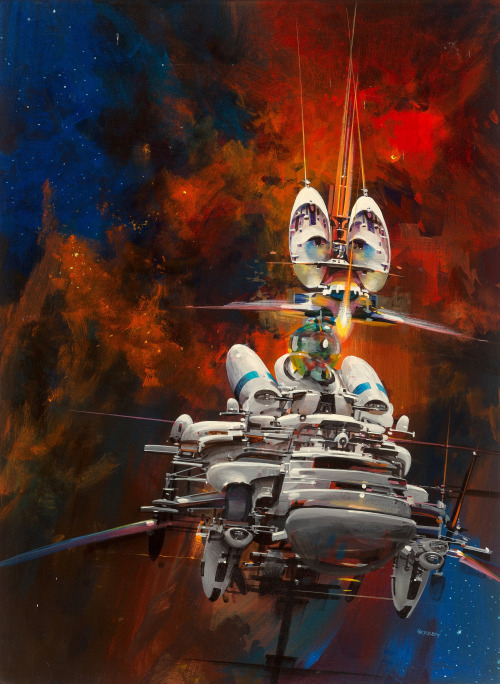HiPOD 28 Dec 2021: Dunes And Bedrock


HiPOD 28 Dec 2021: Dunes and Bedrock
Sometimes, we acquire an image for the simple reason of getting either more coverage of an area, and/or to complete a mosaic of a particular spot. Such is the case for this observation near the center of a massive, eroded and unnamed impact crater in Arabia Terra. It’s located to the west of the much larger Cassini and Pasteur craters.
Enhanced color is less than 1 km across; black and white is less than 5 km. For full images including scale bars, visit the source link.
ID: ESP_065196_1960 date: 23 June 2020 altitude: 279 km
NASA/JPL/UArizona
More Posts from Epic-flight and Others

🌕 Lemat Moon 1 2 3 4 5 6 7 8 9 10 11 12 13🌗 Twinkle Night27 3 17 / instagram / Adobe Behance🌑✨

Rendezvous of Apollo command and lunar modules over the Moon, illustrated by Robert McCall.

Dark Spot and Jovian ‘Galaxy’ - This enhanced-color image of a mysterious dark spot on Jupiter seems to reveal a Jovian “galaxy” of swirling storms. Juno acquired this JunoCam image on Feb. 2, 2017, at an altitude of 9,000 miles (14,500 kilometers) above the giant planet’s cloud tops. This publicly selected target was simply titled “Dark Spot.” In ground-based images it was difficult to tell that it is a dark storm. Citizen scientist Roman Tkachenko enhanced the color to bring out the rich detail in the storm and surrounding clouds. Just south of the dark storm is a bright, oval-shaped storm with high, bright, white clouds, reminiscent of a swirling galaxy. As a final touch, he rotated the image 90 degrees, turning the picture into a work of art.
Credits: NASA/JPL-Caltech/SwRI/MSSS/Roman Tkachenko

Reticulating Splines.
Twitter / Instagram / Gumroad / Patreon
KnownOrigin / SuperRare / OBJKT / Zedge

Pink Sparkles.
Twitter / Instagram / Gumroad / Patreon
KnownOrigin / SuperRare / OBJKT / Zedge

What caused this outburst of this star named V838 Mon? For reasons unknown, this star’s outer surface suddenly greatly expanded with the result that it became the brightest star in the entire Milky Way Galaxy in January 2002. Then, just as suddenly, it faded. A stellar flash like this had never been seen before – supernovas and novas expel matter out into space.
Although the V838 Mon flash appears to expel material into space, what is seen in the above GIF from the Hubble Space Telescope is actually an outwardly moving light echo of the bright flash.
In a light echo, light from the flash is reflected by successively more distant rings in the complex array of ambient interstellar dust that already surrounded the star. V838 Mon lies about 20,000 light years away toward the constellation of the unicorn (Monoceros), while the light echo above spans about six light years in diameter.
Credit: NASA, ESA
To discover more, visit: https://www.nasa.gov/multimedia/imagegallery/image_feature_2472.html

Glacial - 220919

JOHN BERKEY Unknown Casein/Acrylic

Richard Bizley

Another beautiful space painting from my friend Steve R Dodd. ‘The Beacon’. Originally displayed in NASA’s 25th anniversary art show, Cleveland Museum of Natural History (1980s)
-
 epic-flight reblogged this · 3 years ago
epic-flight reblogged this · 3 years ago -
 glacialdrip reblogged this · 3 years ago
glacialdrip reblogged this · 3 years ago -
 glacialdrip liked this · 3 years ago
glacialdrip liked this · 3 years ago -
 pipuisci reblogged this · 3 years ago
pipuisci reblogged this · 3 years ago -
 blackbirdsketch liked this · 3 years ago
blackbirdsketch liked this · 3 years ago -
 fishstickmonkey reblogged this · 3 years ago
fishstickmonkey reblogged this · 3 years ago -
 m00ndingochan reblogged this · 3 years ago
m00ndingochan reblogged this · 3 years ago -
 tapewormfarmer liked this · 3 years ago
tapewormfarmer liked this · 3 years ago -
 edhusky liked this · 3 years ago
edhusky liked this · 3 years ago -
 coolstudentstrawberry liked this · 3 years ago
coolstudentstrawberry liked this · 3 years ago -
 tclhb liked this · 3 years ago
tclhb liked this · 3 years ago -
 brokebutbougielifting reblogged this · 3 years ago
brokebutbougielifting reblogged this · 3 years ago -
 m00ndingochan liked this · 3 years ago
m00ndingochan liked this · 3 years ago -
 kyomo45 liked this · 3 years ago
kyomo45 liked this · 3 years ago -
 bibliophiliosaurus reblogged this · 3 years ago
bibliophiliosaurus reblogged this · 3 years ago -
 the-telescope-times reblogged this · 3 years ago
the-telescope-times reblogged this · 3 years ago -
 the-telescope-times liked this · 3 years ago
the-telescope-times liked this · 3 years ago -
 nocturnalbees liked this · 3 years ago
nocturnalbees liked this · 3 years ago -
 abstractandedgyname reblogged this · 3 years ago
abstractandedgyname reblogged this · 3 years ago -
 brokebutbougielifting liked this · 3 years ago
brokebutbougielifting liked this · 3 years ago -
 pipius liked this · 3 years ago
pipius liked this · 3 years ago -
 spacetimewithstuartgary reblogged this · 3 years ago
spacetimewithstuartgary reblogged this · 3 years ago -
 spacetimewithstuartgary liked this · 3 years ago
spacetimewithstuartgary liked this · 3 years ago -
 starhasarrived reblogged this · 3 years ago
starhasarrived reblogged this · 3 years ago -
 abstractandedgyname liked this · 3 years ago
abstractandedgyname liked this · 3 years ago -
 love-rainbows-and-unicorns liked this · 3 years ago
love-rainbows-and-unicorns liked this · 3 years ago -
 ev75 liked this · 3 years ago
ev75 liked this · 3 years ago -
 starhasarrived liked this · 3 years ago
starhasarrived liked this · 3 years ago -
 theegoist liked this · 3 years ago
theegoist liked this · 3 years ago -
 philgua liked this · 3 years ago
philgua liked this · 3 years ago -
 steve51world liked this · 3 years ago
steve51world liked this · 3 years ago -
 pizzaalien48 liked this · 3 years ago
pizzaalien48 liked this · 3 years ago -
 crashalido liked this · 3 years ago
crashalido liked this · 3 years ago -
 kittycat1810 liked this · 3 years ago
kittycat1810 liked this · 3 years ago -
 fishstickmonkey liked this · 3 years ago
fishstickmonkey liked this · 3 years ago -
 wanderingnork reblogged this · 3 years ago
wanderingnork reblogged this · 3 years ago -
 wanderingnork liked this · 3 years ago
wanderingnork liked this · 3 years ago -
 the-nuclear-chaos reblogged this · 3 years ago
the-nuclear-chaos reblogged this · 3 years ago -
 beautifulmars reblogged this · 3 years ago
beautifulmars reblogged this · 3 years ago
